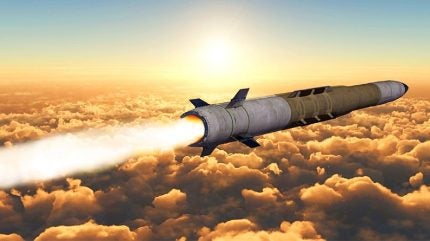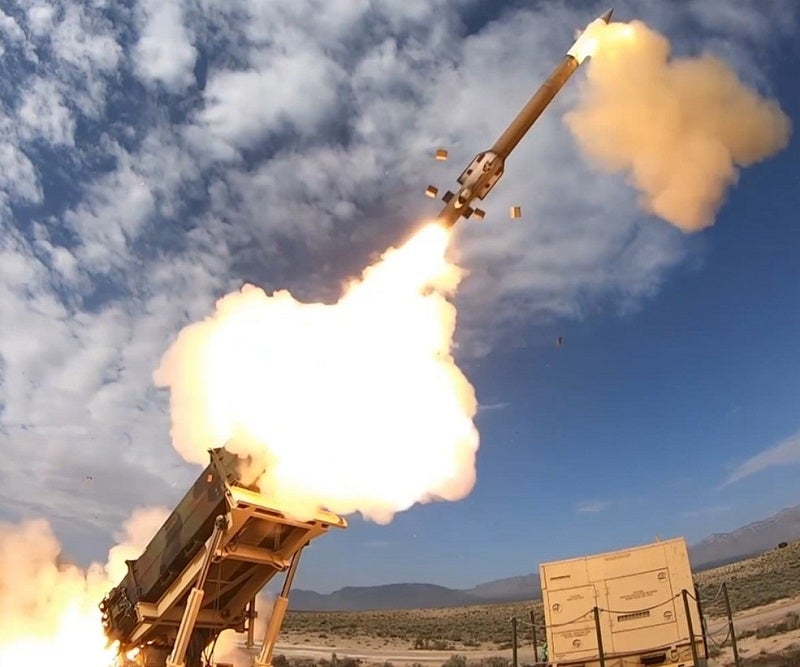
The US Army has allocated $4.5bn toward the supply of PAC-3 missiles in an order placed on 28 June 2024.
US defence prime Lockheed Martin, whose Missiles and Fire Control division is based in Dallas, Texas, will carry out the manufacturing and delivery of the missiles.
The US Army stipulated that the order will initiate a multi-year contract for PAC-3 Missile Segment Enhancement (MSE), beginning with 870 units and associated hardware.
According to additional details put forward by the US Department of Defense (DoD), the work will be completed by 30 June 2027.
The Patriot Advanced Capability-3 (PAC-3) is a long-range, surface-to-surface missile that counters tactical ballistic missile threats, cruise missiles and advanced aircraft. Raytheon performs integration while Lockheed Martin manufactures the missiles.

The missile guidance system enables target destruction through the kinetic energy released by hitting the target head-on. Now, 16 PAC-3 missiles can be loaded on a launcher, compared to four PAC-2 missiles.
The PAC-3 MSE is part of a spiral development undertaken by Lockheed Martin.
The increased range MSE gives the missile a more powerful rocket motor for added thrust and larger fins for increased manoeuvrability against faster and more sophisticated ballistic and cruise missiles. The MSE began flight testing in May 2008.
The missile variant is in high demand globally where it supports the Patriot systems used by the Bahrain, Germany, Kuwait, the Netherlands, Poland, Qatar, Romania, Saudi Arabia, Sweden, South Korea, Taiwan, the United Arab Emirates and the US Army.

A growing Patriot ecosystem
GlobalData intelligence indicates that the global missiles and missile defence systems market is worth $45.2bn in 2023 and will grow at a compound annual growth rate of 4.2% to reach a value of $67.9bn by 2033. The cumulative market is will be worth $657.4bn over the forecast period.
Douglas Bush, the Army’s Assistant Secretary for Acquisition, Logistics and Technology, explained that the new level of demand in a fragile geopolitical environment prompted the Army to set up the multi-year contract.
“This multiyear contract award for the PAC-3 MSE missile follows through on the Army’s commitment to stabilise and expand our production capability for this critical weapon system, which is vital to supporting the US Army and Joint Force, along with Ukraine and other allies around the world.”
In May 2024, the US and Germany financed the replacement of HIMARS in Ukraine, a formidable multiple launch rocket system capable of firing Army tactical missile systems (ATACMS). This time around, the Army will diversify its missile contributions with PAC-3 MSEs as Russia continues to make little progress in its summer offensive within the Kharkiv Oblast.
More widely, Europe has become the leading geographic segment in the missile defence market with a revenue share of 31.1%, GlobalData says. There has been an increase in missile procurements by the European countries to restore the stockpiles to optimum levels, to meet their national security requirements.
Nato’s Support and Procurement Agency secured 1,000 Guidance Enhanced Missiles (GEM-Ts) from the contractor COMLOG, a joint venture between US supplier RTX and MBDA, two of the world’s pre-eminent international missile manufacturers.
An upgrade to the PAC-2 missile, GEM-T provides an upgraded capability to defeat air-breathing, cruise and ballistic missiles, as a complement to the PAC-3 missile. It uses a new fuse and the insertion of a new low-noise oscillator, which increases the seeker’s sensitivity to low radar cross-section targets.
This article has been amended to reflect an update from the US Department of Defense regarding the total cost of the deal.



